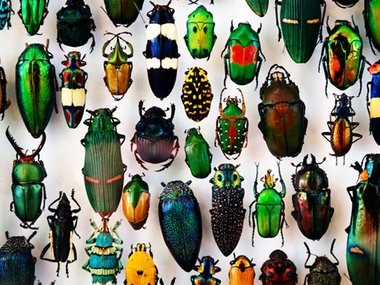Question Your World: What Are the Stranger Things in Science?
According to the Neilson ratings, in the first three days of November, 15.8 million people watched the first episode of the Netflix original, Stranger Things! Also, 326,000 binge watchers saw the entire second season on the day it was released! Fictional shows are all well and good, but the science world has some pretty strange facts to offer as well. What are the Stranger Things in science?
Clearly, people like Stranger Things. Well, we like to give the people what they want. With that said, here are some of the stranger things in science to pair well with your Netflix binging.
Wooly Mammoths and the Egyptian Pyramids.
Sure, we know that some of our earliest ancestors had to hunt and live among the gigantic wooly mammoths, but how long did humans and these creatures share time together on Earth? Most of us were taught about the mammoth and human interactions that date back tens of thousands of years and earlier. These are all true, but there's more to the mammoth and human time on Earth than that. We tend to think of Wooly Mammoths as ancient beasts, but they were still walking the Earth when the pyramids were being built by the Egyptian empire! They were isolated to Wrangle Island in the Arctic, but they were still around well beyond the completion of the great pyramids in Giza.
Uranus and Antarctica
It seems pretty logical to assume that we explored the continents of Earth and then went on to discover the distant planets that are only visible by telescope, right? After all, humanity has made its way all over the planet, even to remote islands and such long before the advent of the telescope in the 1600's. However, strangely enough, the planet Uranus was discovered before humans found Antarctica! In 1781 Uranus was discovered by astronomer William Herschel. Then almost 40 years later, in 1820, a Russian expedition finally discovered the big land mass at the bottom of our world!
Lobsters, Blood Vessels, and Arctic Animals
There are many more strange facts out there. Here's a quick stroll through some of the other bizarre and stranger things in science.
Lobsters have transparent blood flowing through their bodies, but if you expose it to air, it turns blue! This is because of the chemical reaction involving the copper in the blood once exposed to oxygen. They’re not alone - some spiders and snails have blue blood as well.
Speaking of blood, our body has an amazingly compact system of pathways to transport our blood through our blood vessels. If you took all the blood vessels in your body and laid them end to end, you could wrap the Earth two and a half times! That is how much you have within you and that does not even account for your greater potential!
Alligators and tortoises are often considered to be animals found in the warmer parts of the world, right? Interestingly enough, scientists have found fossil remains of tortoises and alligators up in the Arctic at Ellesmere Island, giving us a peek at Earth's warmer climate of 50 million years ago.
So, while there’s no proof of the upside down or demogorgons, the world of science is full of weird facts. On a scale of 1 to 10, some of these go all the way to 11.


